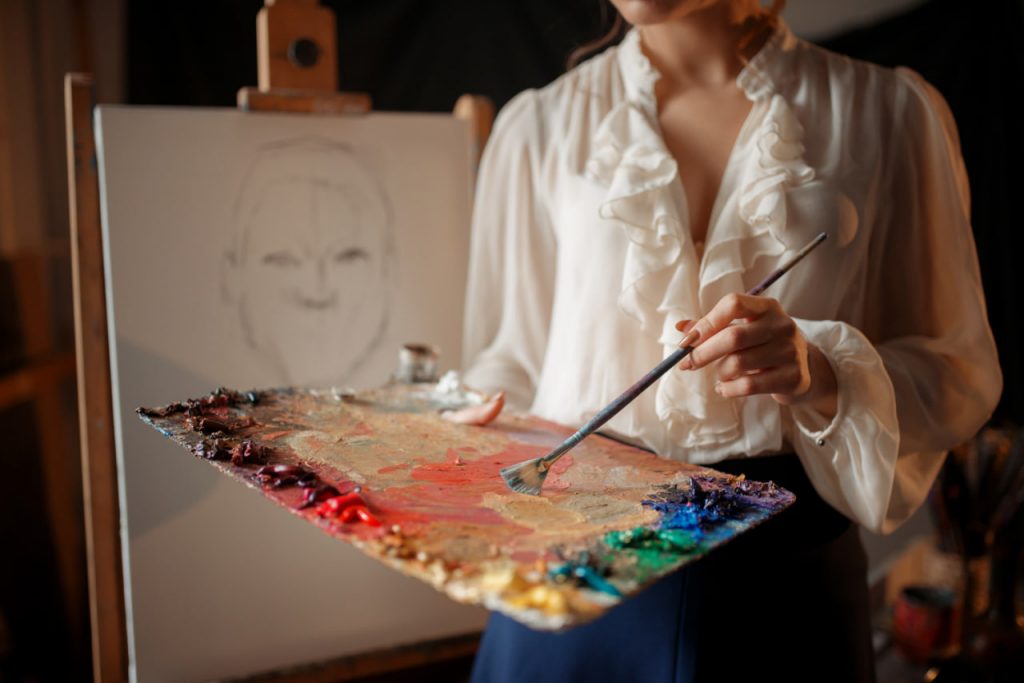Acrylic painting is an exciting and versatile medium favored by many artists for its quick drying time, vibrant colors, and adaptability. However, like any art form, it comes with its own set of challenges that can frustrate beginners and even seasoned painters. From managing fast drying times to achieving smooth blends and preventing cracking, these obstacles can impact the creative process. This guide will explore common challenges in acrylic painting and provide practical solutions to help you overcome them and enjoy your painting journey.
Managing Fast Drying Time
One of the most notable characteristics of acrylic paint is how quickly it dries. While this is beneficial for layering and working efficiently, it can be frustrating when you want to blend colors or work on detailed sections.
To address this challenge:
- Use Slow-Drying Mediums: Acrylic retarders or slow-dry mediums can extend the drying time, giving you more flexibility for blending and working wet-on-wet.
- Work in Small Sections: Paint in manageable areas to keep the paint wet long enough for smooth transitions.
- Mist Your Palette and Canvas: Lightly spraying water on your palette or canvas can help maintain moisture.
- Use Stay-Wet Palettes: These palettes have a moist environment that keeps your paints workable for longer periods.
By incorporating these methods, you can enjoy the benefits of acrylics without the pressure of rapid drying.
Achieving Smooth Blends and Gradients
Blending colors smoothly can be tricky with acrylics due to their fast drying nature. Unlike oils, acrylics can sometimes dry before you finish blending, leading to harsh edges and uneven transitions.
Tips to improve blending:
- Work Quickly: Prepare your colors in advance and apply them promptly.
- Use a Wet Brush: Keep a clean, damp brush handy to soften edges and blend colors seamlessly.
- Layer Thin Glazes: Apply thin, transparent layers of paint over dry sections to create gradual color shifts.
- Experiment with Brushes: Soft, synthetic brushes or fan brushes often work well for blending.
Practicing these techniques will help you create smooth gradients and subtle color shifts that enhance the realism and depth of your paintings.
Preventing Cracking and Peeling
Cracking or peeling paint is a common issue, especially when thick layers or improper surfaces are used.
How to avoid cracking:
- Apply Thin Layers: Thick paint layers are more prone to cracking. Build up texture gradually.
- Use Proper Priming: Always prime your surface with gesso or an appropriate primer to create a stable base.
- Choose Quality Paints: High-quality acrylic paints have better adhesion and flexibility.
- Allow Adequate Drying Time: Let each layer dry fully before applying the next.
Proper preparation and technique help maintain the integrity and longevity of your artwork.
Controlling Color Fading and Yellowing
Over time, some acrylic paintings can experience color fading or yellowing, especially if exposed to sunlight or certain environmental conditions.
Preventive measures include:
- Use Lightfast Paints: Check for lightfastness ratings and choose paints that resist fading.
- Protect with Varnish: Apply a clear acrylic varnish after your painting is dry to shield it from UV rays and dust.
- Store and Display Properly: Keep paintings out of direct sunlight and avoid humid environments.
Taking these steps ensures your artwork stays vibrant for years to come.
Handling Brush Marks and Texture
Acrylic paints can sometimes leave unwanted brush marks or an overly textured surface, which might not suit every style.
To minimize unwanted texture:
- Use Different Brushes: Experiment with softer or finer brushes for smoother applications.
- Thin Your Paint: Mix paint with acrylic mediums or water to create thinner layers that level out easily.
- Use Palette Knives for Texture: If texture is desired, use palette knives intentionally rather than relying on brush marks.
Balancing texture and smoothness allows you to control the painting’s final appearance according to your artistic intent.
Dealing with Paint Adhesion Issues
Sometimes acrylic paint does not adhere well to certain surfaces, leading to peeling or uneven coverage.
Tips for better adhesion:
- Prime Your Surface: Always use a suitable primer like gesso to prepare canvases, wood, or paper.
- Avoid Oily or Dusty Surfaces: Clean your painting surface thoroughly before starting.
- Choose the Right Surface: Acrylics work best on surfaces designed or treated for acrylic painting.
Preparing your materials properly guarantees better results and durability.
Staying Patient and Consistent
Acrylic painting demands patience, especially when layering or working on details. Rushing can lead to mistakes or frustration.
Keep these in mind:
- Allow Layers to Dry Fully: Resist the urge to paint over wet layers unless you’re intentionally blending.
- Practice Regularly: Skill improves with consistent practice and experimentation.
- Learn from Mistakes: View challenges as opportunities to learn rather than setbacks.
Cultivating patience and persistence is key to overcoming obstacles and growing as an artist.

